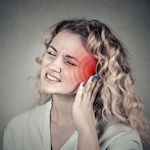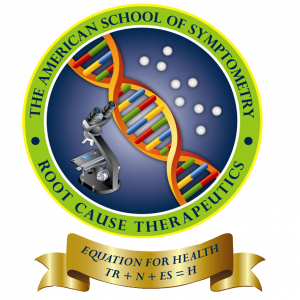
Dr. Maxwell Nartey
Professor of Symptometric Science, American School of Symptometry, NFP
The fungi that infect only the skin, the hair and the nails are called dermatophytes. They release a toxic enzyme called keratinase. It is this enzyme that destroys the nails, the hair, and the scalp to cause dandruff, itchy scalp, brittle hair, brittle nails, toenail fungus, in-growing nails and claw-like nails, etc.
Hair is a dust collector. Since dust is a collection of pulverized minerals, airborne fungi finding growth factors can land on a person’s hair and turn it into its habitat and supplier of growth factors.
To prevent hair from being converted into a fungal habitat, it must be washed once a week or once every two weeks.
Washing the skin every day or the hair once a week, allows oxygen in the water to unglue the fungi called Trichophyton and Microsporum.
Trichophyton damages the hair shaft and the hair follicle to cause thinning hair or alopecia.
Microsporum damages the crosslinks of the skin’s collagen to cause wrinkles and extremely flaccid skin. This is why in order to prevent wrinkles; the skin must be washed frequently. The idea that the skin is not dirty is simply not true. Know the skin as the largest dust collector in the body, and every dust collector attracts and retains fungi.
Epidermophyton is the fungus that feeds on skin oil and on hair oil, thereby making the hair and the skin extremely dry and sometimes itchy. If lesions occur on the skin and on the scalp, Epidermophyton will make it extremely difficult to cure them. This fungus is responsible for causing dandruff, and exfoliation where the skin or the scalp peels off in plates.
The idea that Blacks have dry hair because of their race is scientifically unfounded. There are no diseases that are specific to one particular race. Fungi will infect anyone who breaks the rules of health regardless of their race, complexion, age and gender.
The dermatophytes that cause ringworm are called tineas. Tineas feed on the sulfur in keratin. Tinea capitis is the ringworm that finds its growth factor only in the scalp. Tinea cruris is the ringworm that finds its growth factor in the groin, and Tinea pedis is the ringworm that finds its growth factor between the toes (popularly called Athlete’s foot). Tineas are extremely territorial.
Since tineas like to feed on the sulfur in oil, they find soap to be their deadliest enemy. Why? The answer is, soap is made during the process called saponification, and saponification makes sulfur in oil so toxic that certain soaps suffocate tineas to death.
Wet towels are the ideal sanctuaries for tineas. They even prefer the towels which have just been used and are being hung to dry in the open. The skin salt and oil that are left in the used towels, and the dust from the passing wind that accumulates in these towels, make these towels unhealthy to reuse without washing them. This is because reusing them could make the person susceptible to hair, skin, fingernail or toenail diseases.
Pilobolus is the fungus that infects plants. It releases spores that will stick to leaves, fruits and grass. The person who picks fruits and eats them without washing them, could contract a fungal infection. Also, the animals that feed on contaminated grass would be infected, and their milk can also be infected.
Pasteurization has become extremely important because Pilobolus kept killing milk drinkers or causing weird diseases in them. Additionally, Pilobolus was infecting those who did not thoroughly cook their meat or ate lettuce as salad. It continues until this day to infect spinach, turnip greens, etc. Since it infects many leaves, why add contaminated leaves to a smoothie or why eat leaves raw? It is not recommended to eat raw leaves.
What is the difference between mold and yeast. The difference is, mold including mildew produce mycelia. Mycelia are extremely infectious because of the spores that stick to surfaces.
Yeasts reproduce by budding. During budding, yeasts like Candida albicans, Cryptococcus, Rhizopus, Aspergillus flavus, and Saccharomyces divide unevenly on glucose and form tiny clusters. This is what makes glucose residues in the blood stream their growth factor. What then is the recommendation to cure yeast infection?
In order to cure yeast infection; the person must produce enzymes to thoroughly digest all the sugars and starches they consume. Hence, the importance of enzyme production, change of diet, avoidance of moldy cookies and breads, washing hands after touching old newspapers, washing hands after touching paint or wallpaper, and shoe leather; emphasis on cell oxygenation, pH balance, and avoidance of alcoholic beverages. Why all these measures? Why not just take a pill and be done with it? This was what physicians thought, and they got it wrong. Pills do not cure yeast infection. Here is why.
Fungi are 50 times more pathogenic and resilient than bacteria. They can grow where there is oxygen and where there is no oxygen. Even they can grow on extremely dry wood (lignin) where there are no nutrients, oil and water. This is how tough, resilient and versatile they are. For this reason, only a series of measures can annihilate them.
Why avoid alcohol? Alcohol denatures a person’s enzymes. For example, it is the enzyme called protein kinase that regulates cell division so that new cells can replace old cells. If alcohol denatures protein kinase, it will be impossible for the person to produce new cells to replace old cells. This makes healing impossible.
When a person is sick, they should not just rush to a physician for a diagnosis because the wrong diagnosis would lead to the wrong treatment; and the wrong treatment will cause cell neglect. Then, cell neglect would make the disease chronic. Symptometry urges the public to dig deep into root-cause therapeutics and learn more about the sources of diseases so that people can become enlightened. It is the scientifically enlightened individuals who will have a long and healthy life.
© Copyright 2021, The American School of Symptometry, NFP. No part of this publication may be reproduced or transmitted in any form or by any means, electronic or mechanical, including photocopying, recording, or by any information storage and retrieval system without the written permission of The American School of Symptometry, NFP. Library of Congress copyright number Txu 1-621-370, Washington D.C.


 Previous Post
Previous Post